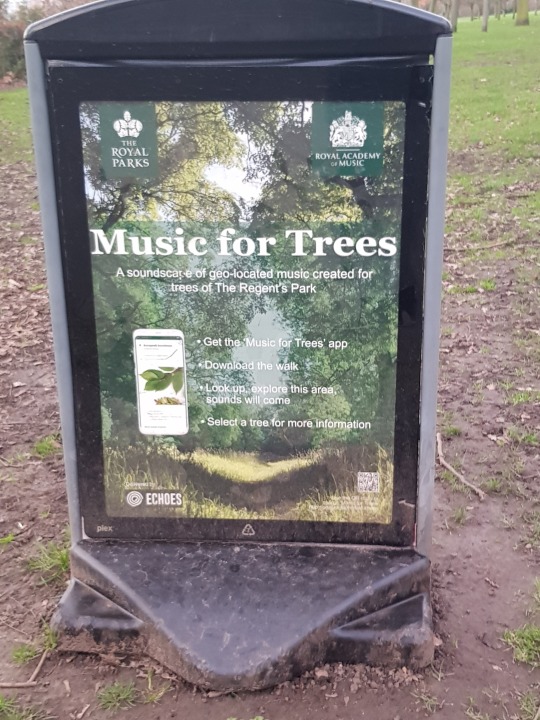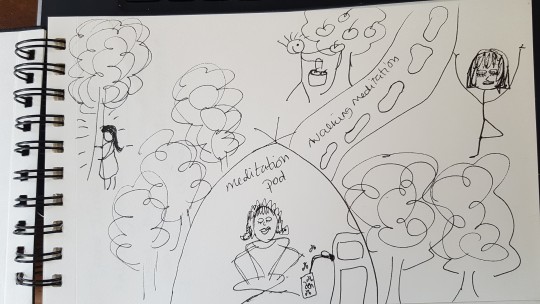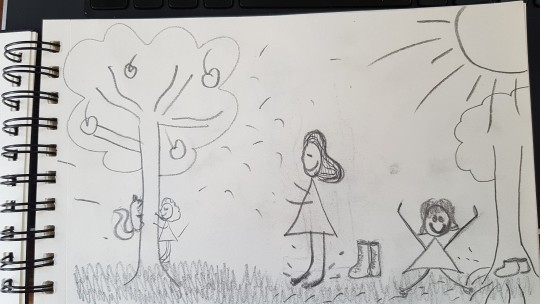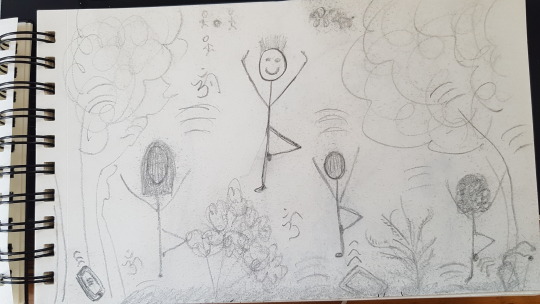#like there are some amazing things being done around the world by environmentalists and scientists!!
Text
Broke: the world is ending and we can’t do anything
Woke: the world is worth saving and we shouldn’t give up on it
Bespoke: the world is worth saving and writers can help by imagining a positive future and encouraging the society to hope again
#read a great article about solar punk#and in it someone comes up and asks#“how do we…hope?#and it’s just like#when did we all forget how to dream#it breaks my fucking heart that half the people in my generation think the world isn’t able to be saved#yeah we have big fucking issues but we also are really fucking smart you guys#I’m just tired of the idea that there are no such thing as happy endings#like there are some amazing things being done around the world by environmentalists and scientists!!#talk about that!!!#write about a better future because goddamn it I think we all deserve to see one#have you ever even imagined what a GOOD future could look like for earth?#what if we could inspire people to invent. what if we can save the world#fucking beavers you guys#we discovered they create ecosystems around them through generations of shaping the land around them#and conservationists have been looking into how we can use that to fix our own ecosystems#Switzerland has figured out a way to convert human body heat into energy#how fucking cool is that!!#sorry. I just have a lot of feelings.
0 notes
Text
2. Fabulations & Trees
What if we could talk to trees?
Reflecting upon the lecture on Fabulation and Design, I realised the word did not mean what I thought it meant - related to fabulous, meaning beautiful or amazing. So I searched for the meaning.
to fabulate: to tell invented stories; create fables or stories filled with fantasy to relate an event as a fable.
Then on Wikipedia, I found the term Fabulation was popularised by Robert Scholes in his work The Fabulators, to describe a style of novel similar to magical realism but that did not fit into the traditional categories of realism or romance.
Interestingly, after having written the first draft of this post I read in the book Critical Fabulations that the writer also chose to describe the meaning of the word at the beginning of the book.
Now I am beginning to understand what our lectures are trying to evoke with the connections between the past and the present and how historical events overlap and connect in so many ways, some of which are not instantly evident.
The forward section of the book spoke to me on so many levels. In the past, Design was about jumping straight into solutions. Nowadays, as we are constantly reminded in the course, we need to understand the user, empathise, define, ideate, prototype, test and repeat the process over and over. This process isn’t linear and designers should move back and forth through the stages as necessary to really understand who the users are, what they do and their needs.
I think that jumping straight into a ‘solution’ or a final ‘idea’ can be quite a natural reaction when faced with a problem to solve, so for our project we are aware of this tendency and have been trying to focus on the process, but every time we meet ideas keep on flowing and we feel excited.
There are 4 of us in the group. A designer/maker, a people-watcher, a word smiths and a coder/hacker. We are so excited!
We have collated our ideas and have been using a colour each to comment on them via Google Docs. At our last meeting we discussed a bit more and decided that we wanted to focus on well-being.
I am a tree lover and one of my ideas was to take ‘tree-hugging’ to another level. Since starting this project, I have found so many interesting websites, articles and books about trees, which I shall continue exploring beyond the course. I believe that technology could enhance the power of trees to help people manage health problems like depression and anxiety, feel more grounded and connect with nature. One website* states that the vibrational properties of trees have many health benefits. So, imagine if technology could enhance this vibration? *http://peacockplume.fr/lifestyle/hugging-trees-good-your-health
Imagine if as you talked to a tree, you heard subtle sounds coming from it? These sounds would match our own tone of voice with a choice of tones controlled by an app or a device on the tree itself, depending on the mood and need of the user. I speculate that having the feedback from the tree would have an effect somewhat similar to talking to a therapist. Usually therapists direct our questions back to ourselves and transform our own statements into questions, for us to answer. We have the answers to our deepest questions, but we do not always listen to ourselves. Talking to trees is a thing nowadays and there is a movement called Forest Bathing*, where people go for guided walks in the woods and are encouraged to talk to a tree of their choice and get to know them.
I feel that these activities have the potential to work because trees can make us look within. It has never been more important to look within than right now, with the increase of social media where many of us expose our lives to the world and find it hard to know when we’ve done too much.
The group thinks trees have a potential for the project. Two members are very keen and have shared materials they have found. I particularly liked the music for trees app at Regents park. See the image below.
A group member shared an essay about the trees that made me reflect on the lecture Fabulation and Design. I wanted to see if I could connect the facts like in the lecture as an experiment with the skill of fabulation.
The essay is called What’s a tree worth? by Jill Jonnes (http://archive.wilsonquarterly.com/essays/what-tree-worth). She gives a chronological (1905 to 2006) account of trees becoming important in the infrastructure of cities and well-being of citizens in American cities. She describes the social and economical benefits of having trees in urban spaces, which started by president Theodore Rooselvelt, who was a tree lover and an exception since politicians didn’t, and still many don’t, see much value in trees.
By the 1970’s most Americans lived in cities. Tree lovers watched as trees began to disappear due to the Dutch elm disease, development and shrinking municipal budgets for tree planting. But in 1989, Chicago’s newly appointed mayor, Richard Daley Jr., a self-proclaimed tree hugger, vowed to plant a half-million trees as part of his effort to revive his decaying Rust Belt city.
I found that in 1989 there were major events in the world. A ‘tree revolution’ was about to start in the USA while on the other side of the world revolutions started in Central and Eastern Europe that resulted in the end of the communist rule. In the same year, British computer scientist Tim Berners-Lee proposed an information management system that initiated the process of creating the World Wide Web, which was the foundation of the internet as we know it now.
Even though these events may not be directly connected, I feel that in some ways they do connect. We wouldn’t be talking about technology enhanced trees if the world had not changed and developed so much that we are now able to know what is going on around the world through the web, and are free to think and progress without worrying about threats from dictatorships in European countries.
For some years after this , trees did not make as many headlines, but times are changing. Now that we don’t need to worry about dictatorships, at least in Europe, and have the incredible World Wide Web at our fingertips, we can focus on planting and protecting trees, which are a priority today, especially with millions of trees being cut down around the world, which is the devastating situation of the Amazon, with a president that have outraged environmentalists and citizens alike when he announced publicly that there is too much ‘free’ land in the Amazon that can be used for farming.
In addition to all of the benefits that trees bring to cities, listed by Jill Jonnes, I’d like to think that ‘Tech-Trees’ would help us connect with our true selves, help us deal with the stresses of living in big cities and motivate more people to plant and protect trees.
To end this post, I attach an extract from the essay which I think is very relevant today.






Caption from bottom to top
1. A tree therapist that listens to people and makes sounds that reassures and empathises with the person who is talking to them.
2. A technology enhanced park with trees that vibrate at the roots so that people feel this subtle vibration to enhance their yoga session.
3. Here trees vibrate on the ground and release an aromatic mist that makes them feel good. The aromas and vibration speed and style can be selected through an app.
4. A smart park with ‘tech-trees’, mediation pods, walking meditation foot path and free fruit to be picked from tress.
1 note
·
View note